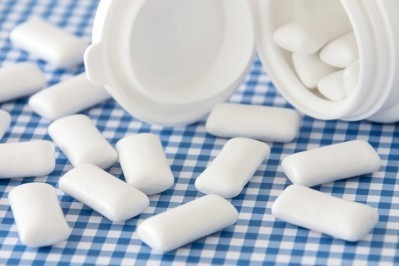Innovations in the Palette: Exploring Titanium Dioxide Replacements in Food Colors

In food colours, where vibrant hues enhance the visual appeal of culinary creations, titanium dioxide has long been a common ingredient. However, concerns about its safety and potential health implications have spurred a quest for alternatives. This blog delves into the dynamic realm of titanium dioxide replacements in food colours, exploring the motivations behind the shift, innovative options, and their impact on the food industry.
The Role of Titanium Dioxide in Food Colors
The role of titanium dioxide in food colours is pivotal, providing a versatile and widely used pigment for vibrant culinary aesthetics.
Whiteness and Opacity: A Double-Edged Sword
Titanium dioxide, a naturally occurring mineral, has been widely used in the food industry to achieve a brilliant white colour and enhance opacity. It’s commonly found in confectionery, frosting, and certain dairy items. While practical, concerns about the safety of nanoparticles and their potential impact on human health have prompted a reevaluation of their use in food.
Motivations for Replacement
Motivations for replacement centre around health, sustainability, and innovation, driving shifts in food industry practices.
Safety Concerns and Regulatory Scrutiny
The safety of nanoparticles, particularly those in titanium dioxide, has been scrutinized. Some studies suggest potential risks, leading regulatory bodies to reevaluate its safety profile. The European Food Safety Authority (EFSA) has reduced the acceptable daily intake of titanium dioxide, further prompting the food industry to seek safer alternatives.
Clean Label Movement
As consumers become more conscientious about the ingredients in their food, the clean label movement gains momentum. Titanium dioxide doesn’t align with the clean label ethos, as it is often perceived as a synthetic additive. This shift in consumer preferences has accelerated the search for natural and transparent alternatives in food colours.
Innovative Alternatives
Exploring innovative alternatives unveils promising options that redefine traditional approaches in various fields.
-
Natural Colors: Beetroot Red, Turmeric, and Spirulina
Nature provides a diverse palette of colours, and food scientists are harnessing the hues of ingredients like beetroot, turmeric, and spirulina as replacements for titanium dioxide. Beetroot red brings a vibrant pinkish-red hue, turmeric imparts a warm yellow, and spirulina offers a natural green. These alternatives not only provide colour but also get additional nutritional benefits.
-
Emulsions and Encapsulation Techniques
Innovative emulsion and encapsulation technologies have been employed to enhance the stability and dispersibility of natural food colours. By encapsulating pigments in a protective layer, these techniques address challenges related to colour degradation and improve the overall performance of replacements for titanium dioxide.
-
Anthocyanins from Fruits
Derived from the pigments found in fruits like berries and grapes, anthocyanins offer a range of red, blue, and purple hues. These natural colours, in addition to providing vibrant shades, bring potential health benefits due to their antioxidant properties.
Industry Adoption and Challenges
Industry adoption of new technologies faces challenges, from regulatory hurdles to shifting market dynamics, shaping the innovation landscape.
Balancing Aesthetics and Functionality
The food industry faces the challenge of finding replacements that match the aesthetic qualities of titanium dioxide and meet functional requirements. The opacity and texture-enhancing properties of titanium dioxide are integral in specific applications, and finding alternatives that replicate these characteristics is crucial.
Consumer Acceptance and Education
As alternatives to titanium dioxide gain traction, educating consumers about the safety and benefits of these replacements is essential. Overcoming scepticism and ensuring consumers are comfortable with the shift requires transparent communication and a commitment to providing safe and effective alternatives.
Sustainability Considerations
Sustainability considerations are pivotal in shaping practices, urging industries to adopt eco-friendly approaches for a resilient and responsible future.
Beyond Safety: Environmental Impact
The search for titanium dioxide replacements isn’t limited to safety concerns alone. Sustainability is a crucial consideration, focusing on reducing the environmental impact of food production. Natural colour alternatives, sourced responsibly, align with the growing demand for eco-friendly and sustainable practices in the food industry.
Conclusion: Shaping a Colorful Future
As the food industry navigates the landscape of titanium dioxide replacements, a colourful future is taking shape. The quest for natural, safe, and sustainable alternatives reflects a commitment to meet evolving consumer preferences and regulatory standards. From the vibrant hues of natural ingredients to cutting-edge encapsulation technologies, the palette of food colours is expanding, promising a future where aesthetics and health-conscious choices harmonize on our plates. The journey to find the perfect replacements for titanium dioxide is not just a scientific exploration; it’s a testament to the industry’s commitment to innovation, safety, and the art of creating visually stunning and wholesome culinary experiences.




